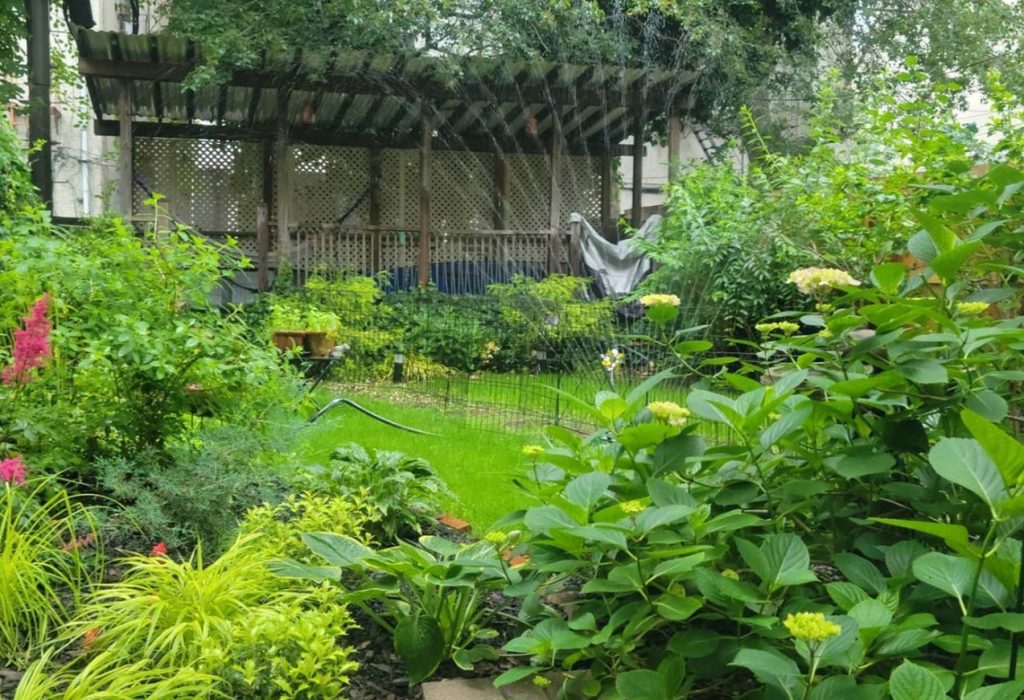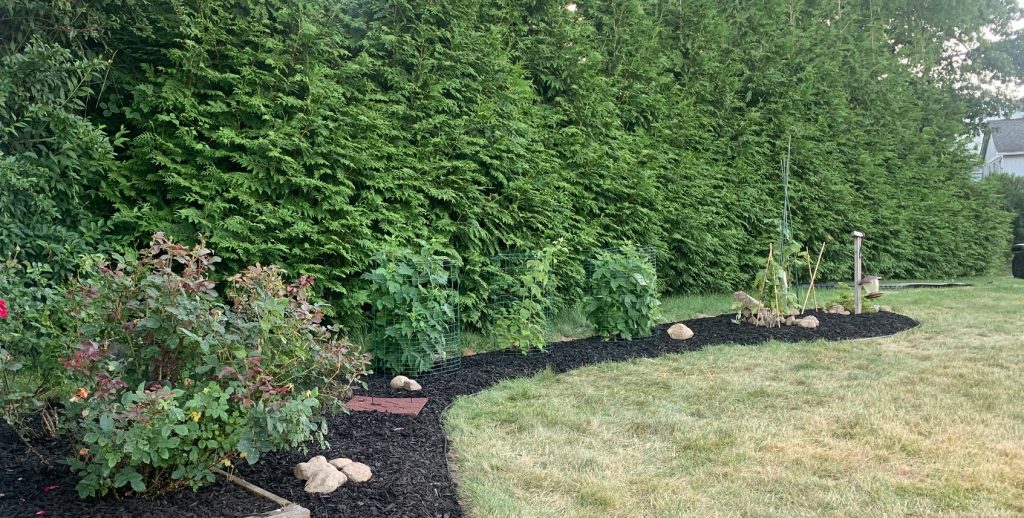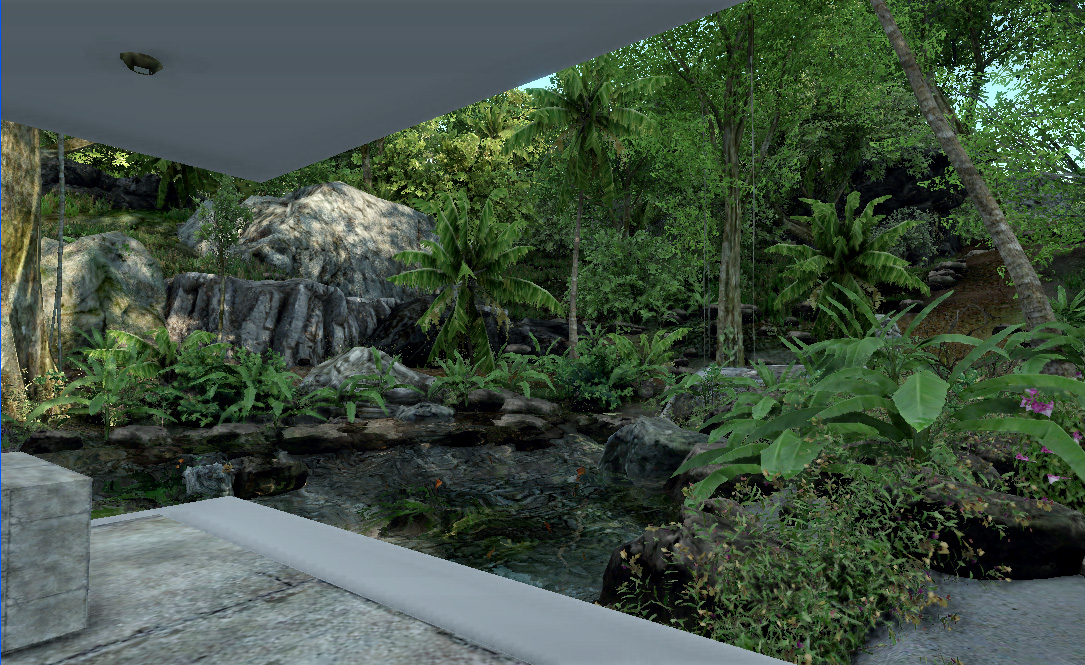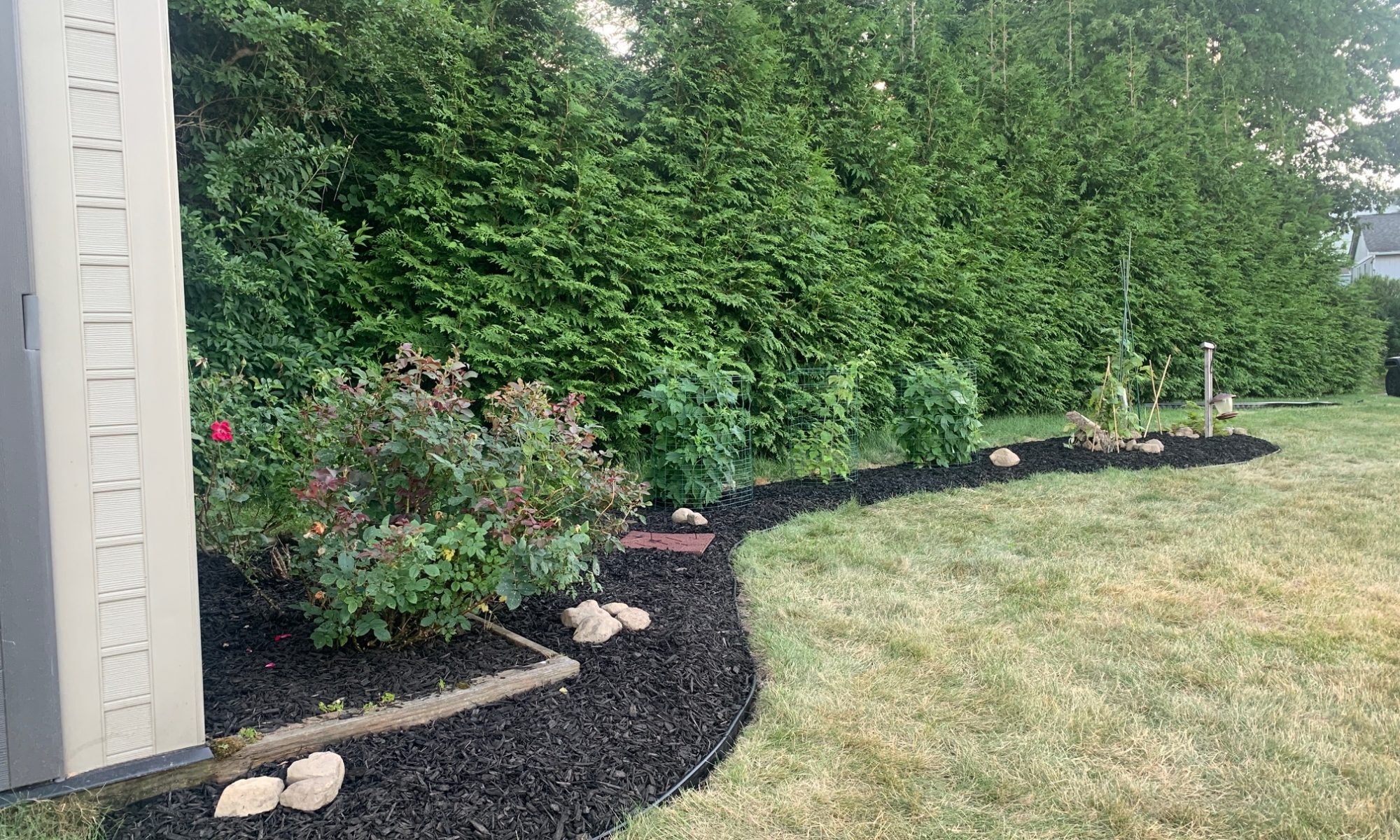Landscaping for Energy Savings: How To, is a homeowner’s guide to employing strategies to lower energy consumption (for heating and cooling) through landscape design. One of the joys of home ownership is the yearly development of one’s garden. Besides watching it bloom, there are benefits to home energy consumption which a proper landscape can contribute to. Here’s a list of tips which will reduce energy costs. They help your home warm in the winter and cool in the summer.
Article by Nic Buccalo, Architect
SUMMER PLANTING:
Reducing Grass Areas saves on energy use to cut grass.
Planting beds with perennials or other plants can help reduce the maintenance required to cut grass.
Keep wood chips away from your foundation to prevent termites from finding paths into your home. Your framed built home should have a termite screed where the siding starts above the ground. 6 inch width of gravel because it helps limit rain splattering onto the house and discourages insects from living close to the house structure.
Blocking Summer Sun helps keep the interior of your home cool.
Planting deciduous trees on the SW corner of a home can shade it and warm the home in winter.

The hottest period of the day is from noon (due south) to 4 PM. To keep up with demand, Air Conditioners will use the most energy during this period, so help your system by reducing the demand.
SUMMER HARDSCAPING:
Shading devices can reduce heat absorption. Use trellises, louvers, awnings and fencing to create shade. Awning are ideal because they can be closed during winter months so more sun reaches the house. Properly designed trellises and louvers can allow warm winter sun in.
WINTER PLANTING:
Blocking Winter Winds helps keep the interior of your home warmer.

By planting conifers in the Northwest quadrant of a house, about 30 to 50 feet away, they will help redirect winter winds away from the surfaces of your house, helping to reduce heat loss.
Compost generates quality soil and absorbs household and landscape debris. It also helps limit the use of chemical fertilizers to keep ground water, run-off and edible plants healthy.
Recycling helps lower the impact of producing new materials from raw components.
OTHER ITEMS:
MULCHING:
It is critical to cut your fall leaves into the grass. Every year, to improve the soil, I spread out the leaves and then cut the grass. This breaks the leaves down and helps fertilize the soil, yielding a greener lawn in the spring and one that can resist droughts better. Sprinkle grass clippings into a vegetable garden or planting beds.
RAIN AND WATER MANAGEMENT:
Roofs and driveways are areas that are not permeable. Redirect rain water away from the house to avoid washouts, flooding, puddles, etc. Discharge should be at least 10 feet away from foundation walls and further if there is a basement. Heavy puddling should include drainage pipes to completely remove all standing water.
Roof Rain Water: If one doesn’t have a drainage pipe system that links downspouts directly to storm drains, then one should find a way to keep this extra water away from the house foundation.
Rain Barrel: One option is to employ rain barrels to collect some of the excess water. During droughts this water will save your garden and lawn. The other option is to pipe water underground to either a dry well, the street or a rain garden. For many who pump water from a well, or pay a water bill, using a rain barrel will lower these costs by using gravity instead of electricity, besides increasing the longevity of the equipment used.
A DryWell is a perforated buried barrel. It collects excess rain water and providing a means to slowly allow the water to be absorbed into the ground over a longer period of time. Involves excavation and subterranean piping.
A Rain Garden is an area that is dug out to allow for the collection of surface water and excessive roof runoff. It remains open to the sky and can be landscaped with rocks, wild-flowers or other things like grass. Like a dry well, a rain garden fills up with water (creating a pond) allowing water to be absorbed into the ground at a slower rate.
HOW TO EXAMPLE:
Rain Garden Case Study: Rain Garden on heavily sloped hill. A client has a condition where their backyard is being inundated with rain runoff coming from the hill above. Because of the steep slope, the property has many retaining walls, making digging trenches for drainage impossible or very expensive.
We decided to create a Rain Garden in the area that flooded the most, and if it fills up then just lay a hose down on the grass to drain the newly formed pond down to the street. The client can add a drainage pipe later if they deem it necessary and financially feasible, to discharge either to the street or to a rain barrel.
CONCLUSION:
Landscaping for Energy Savings: How To will help you plan your next landscape project. Remember to plant trees strategically, block summer sun from entering windows with overhangs while allowing winter sun to enter the home, reduce the amount of lawn area, and collect rain water to help keep your garden looking beautiful.
RELATED LINKS:
Also see Insulation: http://www.simpletwig.com/blog/insulation-everything-you-need-to-know/
and Air-Sealing: http://www.simpletwig.com/blog/home-energy-saving-air-sealing-1-3/

